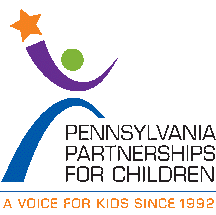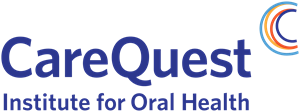- Senator Baldwin Introduces HSHS Act to Protect Communities from Hospital Closures
- What to Know about Smoke, Heat and Health
- Tribal Partnership With UW-Madison Combines Ag Research With Indigenous Food Knowledge
- The Rewards of Working as Rural Docs
- Request for Information (RFI): Evolving the Network of the National Library of Medicine
- Dental Therapists, Who Can Fill Cavities and Check Teeth, Get the OK in More States
- Colorectal Cancer Is Rising among Younger Adults. Some States Want to Boost Awareness.
- Rural Hospitals Built During Baby Boom Now Face Baby Bust
- Food Stamps Go Further in Rural Areas — Until You Add Transportation Costs
- CMS Announces Resources and Flexibilities to Assist with the Public Health Emergency in the State of Texas
- CMS Proposes New Payments for Digital Health Under CY2025 PFS Draft Rule
- Improving Public Health by Strengthening Community Infrastructure
- Biden Harris Administration Proposes Policies to Reduce Maternal Mortality, Advance Health Equity, and Support Underserved Communities
- Nearly Half of U.S. Counties Don't Have a Single Cardiologist
- Randolph County, Ill. Turns Unused Part of Nursing Home Into State-Of-The-Art Behavioral Health Center
Pennsylvania’s “Bridges to Success” Aims to Address Health-Related Social Needs
The Pennsylvania Department of Human Services (DHS) is developing an 1115 Medicaid program, Bridges to Success: Keystones of Health for Pennsylvania (Keystones of Health). DHS hopes to use this program to make health care more accessible, improve quality of care and services, and design and evaluate innovative strategies in health care to help people live healthier lives. DHS’ goal and vision for the waiver is to address Pennsylvania’s Medicaid participants’ health-related social needs with interventions that are both lifesaving and cost saving. Keystones of Health will focus on four key areas: reentry from correctional facilities; housing supports; food and nutrition supports; and multi-year continuous eligibility for children up to age six. Visit the Keystones of Health webpage for more details, including an opportunity to submit comments.
Pennsylvania University Moving Forward with Planned Medical School
Indiana University of Pennsylvania (IUP) recently hired a dean for a proposed medical school that would be a first among Pennsylvania’s 10 state-owned universities. IUP’s proposed medical school is aimed at drawing students from rural areas, who in turn are considered more likely to remain in rural areas.
HRSA Updated Unmet Need Scores Now Available

In December 2022, the Health Resources and Services Administration (HRSA) released the Unmet Need Score map tool to provide information about the need for Health Center Program services by ZIP code. HRSA recently updated the data for the 28 health determinant and health status measures that factor into Unmet Need Scores (UNS). Find details about the data sources and calculation methodology in the UNS and Service Area Status (SAS) Resource Guide (PDF).
HRSA recommends using the tool to explore proposed service areas and do strategic planning.
Report: Pennsylvania One of Three States with Rise in Uninsured Kids

A new report from Pennsylvania Partnerships for Children shows that the commonwealth is one of three states where the number of uninsured children increased in 2022 – with 145,000 uninsured children in the state, including nearly 6,000 in Allegheny County. Read more.
New Teledentistry Toolkit Available from CareQuest

The CareQuest Institute for Oral Health released a new resource, “Teledentistry Regulation and Policy Guidance: A Toolkit to Promote Access and Quality Care Through Teledentistry.” This resource identifies primary considerations for regulators and policymakers regarding teledentistry and includes key recommendations.
American Academy of Pediatrics Launches New Fluoridation Webpage
The American Academy of Pediatrics recently launched a new fluoridation webpage. It provides numerous downloadable resources for health professionals and families and tackles frequently asked questions including questions rooted in misinformation. The new webpage also includes videos about fluoridation, infographics, and posters that are able to be printed.
Updated Pennsylvania State Health Assessment Report Published
The Pennsylvania Department of Health Office of Operational Excellence recently published the updated 2023 Pennsylvania State Health Assessment (SHA). The report, “The State of Our Health: A Statewide Health Assessment of Pennsylvania,” was first published in August 2023. The report highlights the need for more dentists in Pennsylvania, especially for those enrolled in Medicaid. It also touches on the importance of oral health and dental caries as one of the most chronic diseases in the country. Thanks to the Pennsylvania Department of Health for including PA Coalition for Oral Health as a stakeholder for this important report.
Listen to ‘Tradeoffs’: How the Loss of a Rural Hospital Compounds the Collapse of Care

The share of rural Americans who live in communities without a hospital grows each year. It’s part of an ongoing collapse in rural health care that has persisted for decades and isn’t improving, despite regulatory efforts to shore up small-hospital finances.
Since 2010, about 150 rural hospitals have shuttered and hundreds more have slashed services, leaving a growing number of America’s 60 million rural residents in health care deserts.
In this 2020 encore episode of the “Tradeoffs” podcast, Dan Gorenstein talks with KFF Health News chief rural health correspondent Sarah Jane Tribble about her yearlong effort to document the collapse of one rural Kansas community hospital. Nearly six years later, the residents of Fort Scott, Kansas, still live without a local hospital, a reality visited upon dozens more small towns in the years since.
“We’re talking about millions of lives affected by the kind of health care delivery that’s in these communities,” Tribble said. “Rural America, on a whole, is poorer, sicker and older than urban America. People whose lives are affected daily by chronic health issues.”
Listen to the episode here.
The Philadelphia Fed: Advancing an Inclusive and Resilient Region, Together

The Federal Reserve Bank of Philadelphia has created innovative programs to grow community capacity, share best practices, and foster the local connections essential to sustaining and expanding our progress in the future.
Below are just a few examples of this, which we look forward to building on in 2024:
- The Anchors for Equity Research in Action Lab is exploring how anchor institutions, namely hospitals and higher education institutions, can align their business practices with community development goals, promoting inclusive economic growth and enhancing opportunities for underrepresented groups. We’re excited to support inaugural communities in Scranton, PA, and Atlantic City, NJ, as they partner with anchors to address local workforce challenges in 2024.
- The Reinventing Our Communities (ROC) Cohort Program will launch in 11 communities across nine states in early February. The yearlong program encourages strong local economies by helping communities across the U.S. address structural racism and barriers to economic mobility. Cohorts of cross-sector community leaders participate in workshops and peer learning to gain skills and create a tailored racial equity plan to address local challenges.
- The Worker Voices Project has provided new insights into how job seekers and workers in lower-wage roles navigated the labor market at the onset of the COVID-19 pandemic and through the recovery — and how it changed what they expect from a job. Learning about these workers’ firsthand experiences gives us a deeper understanding of economic conditions and labor market dynamics.
CMS Releases Latest Enrollment Figures for Medicare, Medicaid, and Children’s Health Insurance Program (CHIP)

The Centers for Medicare & Medicaid Services (CMS) released the latest enrollment figures for Medicare, Medicaid, and the Children’s Health Insurance Program (CHIP). These programs serve as key connectors to care for more millions of Americans.
Medicare
- As of September 2023, 66,472,325 people are enrolled in Medicare. This is an increase of 134,147 since the last report.
- 33,990,369 are enrolled in Original Medicare.
- 32,481,956 are enrolled in Medicare Advantage or other health plans. This includes enrollment in Medicare Advantage plans with and without prescription drug coverage.
- 52,204,330 are enrolled in Medicare Part D. This includes enrollment in stand-alone prescription drug plans as well as Medicare Advantage plans that offer prescription drug coverage.
- Over 12 million individuals are dually eligible for Medicare and Medicaid, so are counted in the enrollment figures for both programs.
Detailed enrollment data can be viewed here: https://data.cms.gov/summary-statistics-on-beneficiary-enrollment/medicare-and-medicaid-reports/medicare-monthly-enrollment . The data now include counts of Part D enrollees receiving the low income subsidy.
Medicaid and Children’s Health Insurance Program (CHIP)
- As of September 2023, 88,414,773 people are enrolled in Medicaid and CHIP. This is a decrease of 1,593,385 since the last report.
- 81,408,432 are enrolled in Medicaid
- 7,006,341 are enrolled in CHIP
For more information on Medicaid/CHIP enrollment, including enrollment trends, visit https://www.medicaid.gov/medicaid/program-information/medicaid-chip-enrollment-data/medicaid-and-chip-enrollment-trend-snapshot/index.html
Every state across the country is currently resuming their regular processes for renewing individuals’ Medicaid and Children’s Health Insurance Program (CHIP) coverage. CMS’ goal is to help people stay connected to the coverage for which they are eligible. Read more about data related to renewals at www.medicaid.gov/unwinding-data
See the latest coverage totals across all CMS programs at https://www.cms.gov/pillar/expand-access. This information is updated on a monthly basis. Enrollment data for CMS programs are compiled on different timelines owing to the unique nature of each program.
